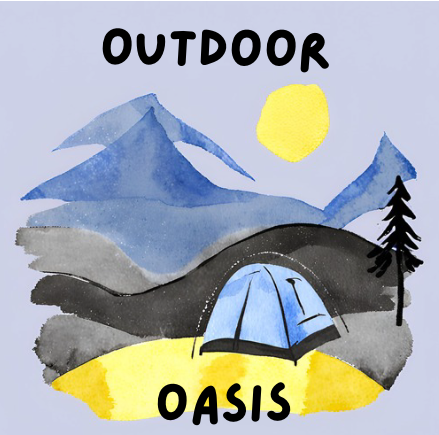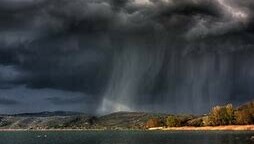
I’m going to kick things off by tackling the unpredictable: weather. When you’re out in the wilderness, a clear sky can turn stormy in no time, and you need to be ready. That means before you even pack your first tent peg, you’re checking the forecast for your destination. But don’t stop there; keep an eye on updates right up to your departure.
You’re going to find out about packing a weather-resistant kit that has you covered come rain, shine, or howling winds. Waterproof gear is a given including jackets, pants, and covers for your backpack. But don’t forget the extras like tarps for extra shelter and plenty of layers for those chilly nights.
When you’ve arrived at the pending campsite, consider the lay of the land. Setting up shop under a thick canopy may shield you from rain but watch for loose branches. And having a tarp under your tent? That’s a smart move for keeping dry if the ground decides to become a sponge overnight.
Say the winds do pick up, or the thermometer drops more than expected. Your adaptability is as important as your planning. Tents can be reinforced, clothing layered, and itinerary changed. Keep morale high by staying proactive change wet clothes regularly, have warm beverages on hand, and keep that cozy campfire dream alive for when the weather breaks.
Selecting the Perfect Campsite: Factors to Consider for a Safe and Enjoyable Stay
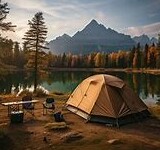
You’ve got your waterproof gear and extra layers packed, ready for whatever Mother Nature throws your way. But where you pitch your tent matters just as much as what you pack. That’s right, the choice of campsite can make or break your outdoor excursion. So, let’s talk about how to pick a winner.
Planning ahead can’t be overstated. I’m talking about scoping out your options well in advance. And during peak season? Double down on that advice. Research campgrounds, pore over reviews, and get that reservation locked in early. It’s your best bet for snagging a spot that ticks all the right boxes.
Once you start sifting through potential sites, safety should be your top priority. Look for level ground that’s free of hazards like rocks, roots, or sloping terrain, which could turn a good night’s sleep into an impromptu slide. Dry spots away from riverbanks or lake shores are ideal—they’re less likely to become a waterfront property overnight.
Then there’s the matter of dead trees or precarious branches—these can be more than a nuisance; they’re potential hazards, especially in windy conditions. Pay attention to signs of decay or instability and set up a safe distance away. Remember, old branches and trunks don’t care about your well-thought-out plans. They come down when they please, not when it’s convenient.
Also, while you’re admiring the scenery, don’t forget to consider the practical aspects. Is there a water source nearby? How close are you to bathroom facilities, if that’s something you want? Don’t neglect local regulations. They’re there for a reason, and they often inform you about protected areas and wildlife considerations.
Next up is the topic everyone has a story about—those critters, large and small, that see your campsite as a 24-hour diner. From clever possums to curious kangaroos, I’ll delve into the best ways to prevent wildlife from gatecrashing your peaceful retreat. And yes, it’s going to involve a lot more than just a sturdy cooler.
Wildlife Wisdom: Coexisting Safely with Nature’s Inhabitants
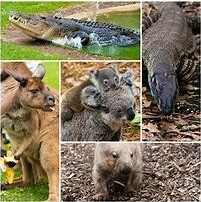
You’re going to find out about the delicate dance of sharing outdoor spaces with wildlife. It’s not just about enjoying the occasional Kangaroo or Koala sighting; it’s also about taking proactive steps to ensure both your safety and the well-being of the animals you encounter.
Understanding local wildlife is crucial. I’m here to help you with learning about the creatures in your camping area, including what’s attracted to your food and the signs of a more serious predator presence. This knowledge guides how you manage food storage and reduces the likelihood of unexpected visitors.
Storing your food securely might sound simple, but it’s a game-changer. This involves using animal-proof containers or hanging your provisions out of reach. And don’t forget about your trash—keeping your site clean isn’t just courteous to other campers, it’s a basic step in pest prevention.
But what if those preventive measures aren’t enough? Don’t worry too much about this—incidents are rare when you’re prepared. However, if you encounter wildlife, knowing how to respond calmly can prevent a curious situation from turning confrontational. And in my opinion, it’s always better to err on the side of caution and give animals plenty of space.
In the next section, we’ll transition from furry and feathered friends to another crucial component of your camping experience—your gear. I’ll share insights on how you can tackle gear glitches with confidence, ensuring every piece of equipment contributes to, rather than complicates, your wilderness adventure.
Embracing the Great Outdoors: Evolving from Camper to Nature’s Confidant
You’ve taken the time to understand the local wildlife and secured your camp to prevent, as much as possible, any unwelcome surprises. This isn’t just about avoiding inconvenience; it’s about fostering a deeper respect for the natural world and its inhabitants.
Think of these challenges not as hurdles but as steppingstones that lead to a more fulfilling outdoor experience. Every wildlife whisper and rustle of leaves presents an opportunity to learn and to grow as an outdoors person.
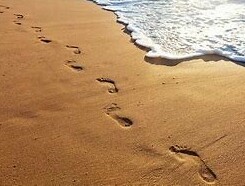
When you pack up your tent and leave nothing behind but footprints, you’re doing more than concluding a camping trip. You’re solidifying a bond with nature that enriches your soul and sharpens your camping expertise. You carry home not just memories but also invaluable practical knowledge for your next adventure.
So, as you reminisce about the starlit skies and the chorus of morning birdsongs, remember that with each trip, you’re fine-tuning your skills. You’ll arrive each time better prepared, more attuned to nature, and more in harmony with the environment. That’s the beauty of camping: it’s an ongoing journey of discovery, learning, and joy in the embrace of the great outdoors.
Happy Camping!
Graham
